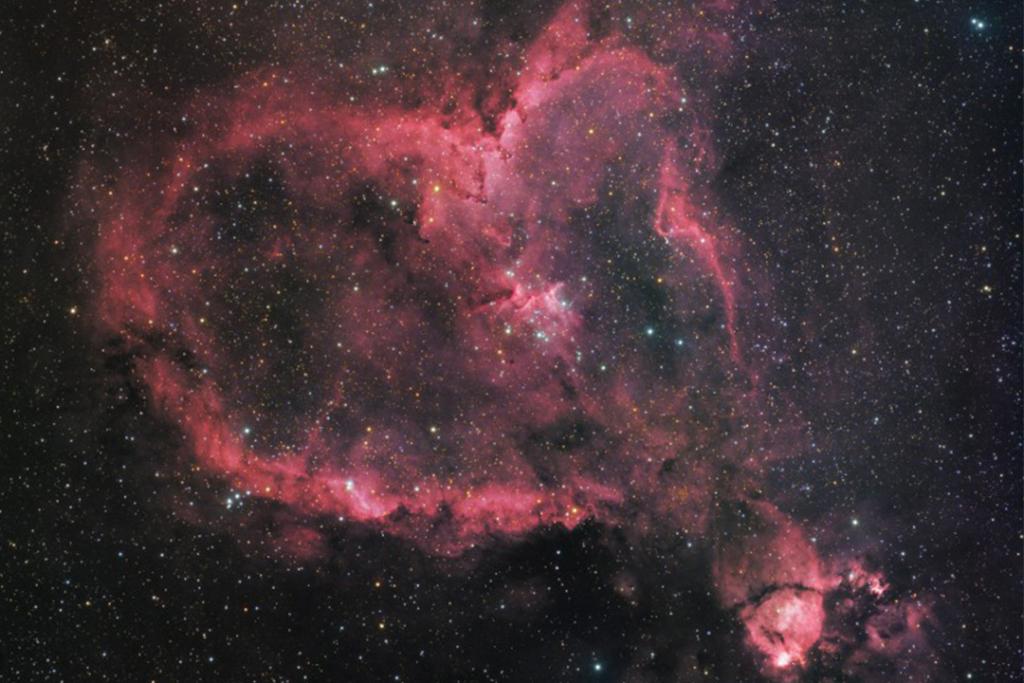Five romantic constellations for Valentines day
From the great diamond to the cosmic rose, we explore the most romantic constellations in the night sky.

The night skies have always been a source of inspiration and awe, but did you know they're also full of love? Here's our guide to night skies, for those with love in their eyes.
A Cosmic Rose
Starting off deep in space (330 million light-years away) we find a Cosmic Rose, found in the constellation Andromeda.
Andromeda was the daughter of Cassiopeia and found herself chained to rocks by Poseidon after her mother’s boasts that Andromeda was more beautiful than the sea nymphs. Not only was that bad, but Poseidon decided to send the sea creature Cetus to devour her. Luckily though, the hero Perseus, who had just killed the snake-headed Medusa, rescued her by showing Medusa’s head to the creature turning it to stone. It was a good day for Perseus and to top it of, as a reward for saving her life, they marry and live happily ever after reigning over Greece!
It seems fitting that after such a romantic tale, a rose should be found in her constellation. The 'rose' is a result of when galaxies get too close, gravity between them causes them to deform and warp, changing shape as they interact. The unromantically named Arp 273 is the result of the smaller of the two galaxies passing through the larger galaxy. The larger galaxy is five times the mass of the smaller one, but is still profoundly affected by the behaviour of its smaller companion. Perhaps there’s a message for lovers everywhere!

Heart Nebula
Remember boastful Cassiopeia from the story of Andromeda? Well, she too has a constellation in the sky, it is a distinctive ‘W’ shape found in the north. In that constellation some 7,500 light-years away is the Heart Nebula. It is made from two long, red, glowing, clouds of Hydrogen. It is an emission nebula, meaning it glows as a result of radiation from a nearby cluster of young hot stars. The star cluster is called Melotte 15, the stars are babies, a mere 1.5 million years old.
The Jewel Box
A commonly desired gift may be nice shiny jewels, perhaps rubies and sapphires? In the skies of the Southern hemisphere in the constellation of Crux, the Cross, lies the Jewel Box. Full of more than 100 lovely shiny sparkly stars, it gets its name from astronomer Sir john Herschel who described it as 'a casket of variously coloured precious stones'. The cluster is one of the youngest known at 14 million years old and is formed from supergiant stars, some of which are the brightest stars in the Milky Way. The one bright red star makes a nice contrast to the blue stars around it.

The Great Diamond
Perhaps you prefer a more understated gift, maybe a single diamond? The spring sky has just the thing for you, the Great Diamond is made of four stars from four different constellations all visible in the Spring sky. The top of the diamond starts with the romantically named star Cor Caroli (Charles’ Heart) in the faint constellation Canes Venatici or Hunting Dogs, which lies just under the handle of the Plough. Down to the right is Denebola, the second brightest star in Leo, the bottom of the diamond is marked by Spica the brightest star in Virgo and the final star is Arcturus; a red giant found in Boötes, the hunter.

So if you are feeling romantic and want to treat your loved one to something different (or left it too late to book a table) a tour of some of the treasures of the night sky will make for an unusual and memorable treat. Surely only the hardest of hearts would fail to melt!
